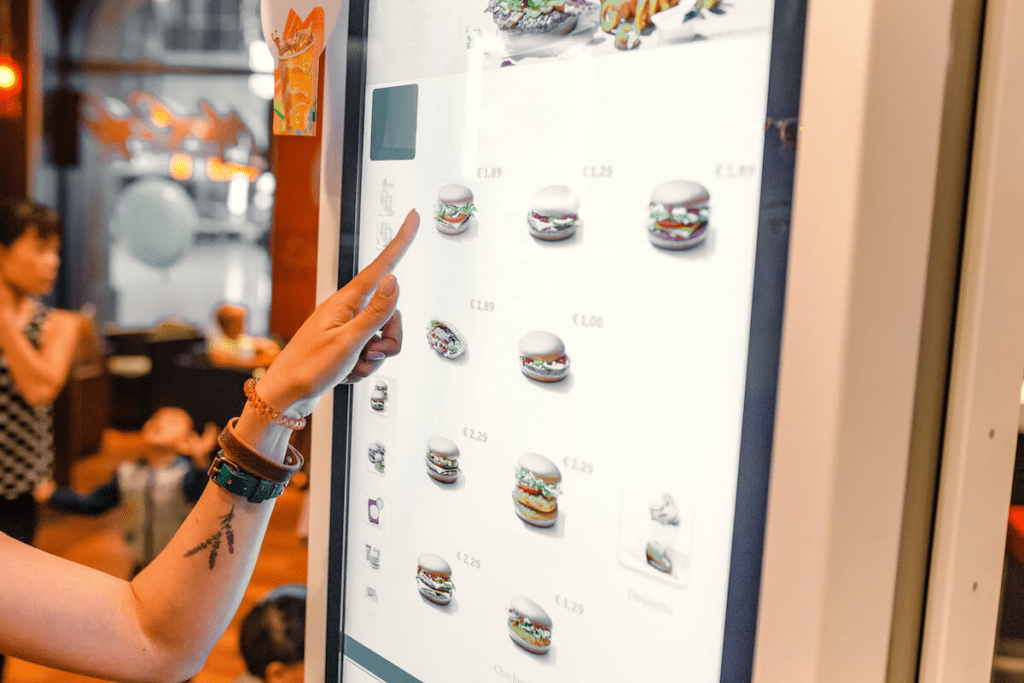Key Takeaways:
The restaurant labor shortage, brought on by the COVID-19 pandemic, has the whole industry in a hiring crisis. Without enough workers to fill the line, restaurant operators are being forced to raise prices, reduce menu options and cut operating hours in an attempt to stay open.
Restaurants have faced the difficult decision to either shut down or lay off workers, including talented long-term employees. As the world begins to return to normal, restaurants are struggling to fill those same roles. Restaurant workers have had the opportunity to leave the industry for a new job or position themselves for better perks in their current one.
The restaurant staffing shortage is proving to be about more than higher wages and better health insurance. Workers are driving change for better working environments and more sustainable conditions.
In this article, we’ll discuss how the restaurant labor shortage is forcing the industry to adapt with new ways of operating and the solutions that are helping restaurants recover and come back better than before.

The hospitality industry was the first and hardest hit by pandemic shutdowns. Employment in leisure and hospitality has dropped 10.3% since February 2020, according to the Bureau of Labor Statistics.
That drop is a huge issue for an industry that relies on workers being in-person. While many companies mandated remote work for their teams, restaurants became essential and needed staff to physically show up for the business to survive. Many workers feared losing a steady paycheck, but for some, the risk of standing less than 6 feet from coworkers was simply not worth it.
Without income, workers leaned on unemployment benefits as a lifeline. This unexpected time off gave hourly workers the opportunity to reevaluate expectations of their working conditions. Away from the high-stress environment and faced with indefinite unemployment, workers used the time to reflect and redirect towards other career paths. For those who opted to stay, the changes they’re seeing (or hoping to see) are increased hourly wages, accessible health care and a better work-life balance.
As restaurants struggled to stay afloat, the guest experience suffered from slowed speed of service and long wait times. Without enough manpower to keep up with the demand, remaining employees hit their breaking point and started walking off the job, with no plans to return.
But despite how bleak things look, there are solutions: find the right people to fill your open roles and optimize your restaurant’s operations with helpful technology.
As mandates lift and Americans demand a return to normal, the need for restaurant workers is changing the value of hourly work. The restaurant staffing shortage is affecting restaurants regardless of their service model. From fine dining to QSR, everyone is looking for workers. Even large, national fast-food chains, typically run by local independent franchisees, are struggling to find staff members.
What can you do amidst this shortage to attract employees (and hold onto them)? Here are six ideas to stand out.
To become an employer of choice, restaurants have to offer more than the highest hourly rate. Job ads are flooded with attractive perks like four-day workweeks, unprecedented hourly rates and even signing bonuses. It’s unclear whether the impact will have a long-lasting effect.
Employers need incentives that provide value, not just dollars and cents. A defined training program, routine check-ins and scheduled performance reviews show workers that an employer is invested in their growth as well as the growth of the business.
Schedule a daily shift meeting when a majority of workers will be on the clock. This can be a short meeting to bring everyone together and help prepare for the shift and address challenges workers may face. A team meeting encourages worker participation and gives everyone room to voice any lingering concerns or issues that affect the team. Keep the focus on the shared mission, not individual complaints or struggles.
It’s also a chance to highlight standout performances, teamwork or recent accomplishments. Operators can get collective feedback without singling out one person or group while sharing a transparent view of the challenges the team will face that day.
When employees are aware of the issues that may affect their role or duties, such as supply chain shortages or product price surges, it allows them to become more involved in the business. By engaging workers with the bigger picture, they become more knowledgeable and capable of handling certain circumstances or difficult interactions that come along with their daily tasks.
When an employee feels entrusted with the reasons why, they feel more empowered to be a part of the solution, creating a cohesive workplace culture.
Every worker has the potential to become the best. They just need the right support. When hiring, the focus should be on hiring a team lead or supervisor who can be the ground support to struggling or understaffed teams.
A quality team leader shows empathy, strong communication and interpersonal skills. Such a leader is a quick learner who thinks fast on their feet and can master tangible skills effortlessly while focusing on building a strong team. This leader directly supports workers, understanding their strengths and weaknesses and sensing when a struggling worker is in need of support.
A strong team lead holds others accountable while assisting them in accomplishing their tasks. A focus on hiring the right leaders will boost individual and team morale, build confidence and develop a culture of growth.
Instead of relying on a Band-Aid solution, restaurants need to focus on the bigger issue: employee retention.
Retention comes from creating a culture that values the employees as much as the guests. If restaurants want to have the best workers, they must become the best place to work beyond high hourly rates. Restaurants that provided not only a livable wage but also mentorship and training saw less turnover and higher retention rates.
Mentorship offers new staff a connection to the already-established culture. It provides a team-first mentality, delivering better employee morale, which in turn means a better guest experience. A restaurant that develops an ongoing training and cross-training program has higher job satisfaction and more productive workers. It creates an open line of communication and allows workers to jump into different roles without getting bored, all the while supporting restaurants struggling to keep line positions filled.
Though higher wages and better benefits may get workers in the door right now, it’s a short-term fix that will create more staffing challenges down the line, leaving restaurant operators managing a revolving door of employee turnover. (Stay tuned for the long-term fix.)
Once you have workers in place, it’s time to re-think how you do business. Restaurants that last are using AI to support their team, making takeout and delivery a priority, and taking advantage of new apps and platforms for day-to-day business.

The current staffing shortage is an opportunity for restaurants to innovate and adopt new technology, including artificial intelligence (AI), which has emerged as the savior of restaurant owners during COVID.
Multi-tasking may be standard in restaurants, but workers have been pushed over the edge dealing with difficult guests, overflowing orders and not enough support. Voice AI offloads the ordering process from team members, with the technology taking on the responsibility of remembering guest preferences and upselling the guest based on what will pair with items ordered.
Automating simple tasks with AI technology allows workers to focus on high-value tasks that support sales, boost business and morale. Virtual assistants give staff members time back that can be better spent cultivating a connected workplace culture through training, developing and mentoring. Workers can develop skills that help to progress and advance their careers.
Technology has already become an integral part of the restaurant dining experience. The pandemic forced guests to become accustomed to ordering through different channels, whether it’s online, on a mobile app or in a drive-thru, where there is less face-to-face contact.
Gen Z and millennial markets prefer contactless processes that allow more ease and customization. These tech-savvy consumers helped drive the delivery market from 7% in 2019 to 28% in 2020, ordering from a mobile delivery app at least one time per week.
The rapid advancements in technology and quick adoption rates prove consumers are looking for dining options that provide a comfortable, hassle-free and time-saving experience. Voice AI can help support restaurants as diners return in-person or continue with the convenience of drive-thru and delivery.

Without enough staff to fill the line, restaurants have been forced to pivot. By limiting menu options, reducing hours of operation or changing entire concepts, restaurants have adapted their business structure to relieve limited staff and cut down on overhead costs.
When indoor dining rooms shut down, takeout, delivery and ghost kitchens took off. The mobile delivery app DoorDash reported that delivery orders jumped to 543 million in the first nine months of 2020 compared to pre-pandemic numbers of 181 million in 2019. With almost 112 million Americans ordering delivery in 2020, the demand for delivery has proven to be critical for restaurant survival.
Ghost kitchens, a delivery-only concept, became a trend that is here to stay. With a market size of $43.1 billion in 2019, ghost or cloud kitchens are expected to grow to $71.4 billion by 2027. Ghost kitchens allow operators to start up for a fraction of the price of a traditional restaurant. There are less overhead costs and more flexibility with the menu and concepts so operators can adapt to the market and supply chain. As a delivery-only model, the need to be in a prime location and pay a premium rent is gone.
While the pandemic caused many restaurants to shutter, those who have adapted and implemented new channels of service have been able to grow and expand their business.

QR codes and self-serve kiosks have quickly become a part of the ordering process to fill the gaps during the restaurant staffing shortage. Contactless ordering has relieved the stress of understaffed restaurants, allowing guests to view and place their orders directly from their phones and limited teams to focus on preparing the orders. Guests have accepted and adopted this as a new standard and restaurant operators are seeing increased speed of service and sales as a result.
Mobile apps and platforms aren’t only helping ease the pressures of each shift, they are also reshaping the industry’s hiring process. Platforms like HourWork are assisting restaurants to hire more efficiently, providing a more targeted applicant pool and making recruiting and retaining workers less stressful for managers. HourWork also provides a retention system that generates automatic check-ins with staff and uncovers actionable insights that assist operators in becoming an employer of choice.
The pandemic also brought the rise of virtual dining experiences. Restaurants who were struggling partnered with popular YouTube brands by lending out their kitchen and staff to provide a virtual dining experience that could be shared from anywhere. Videos of cooking challenges and demos featured local restaurants in need of help to gather support and spread awareness.
Amidst the strain of the restaurant staffing shortage, there is a vital opportunity for restaurants to make impactful changes to support both the business and its workers. AI solutions such as voice AI are leading the charge to help restaurants come back better than before.
Voice AI assists tired teams and boosts slow sales by integrating seamlessly into the current POS system to provide an intelligent order entry interface. A digital voice ordering expert can stand in for a restaurant’s FOH team and automate the ordering process across all channels. By introducing a virtual ordering assistant, restaurants can relieve overwhelmed workers and allow them to focus on high-quality food preparation and guest experience.
With its best-in-class technology, voice AI is aiding restaurants and helping transform the industry to emerge stronger than before.
Find out how ConverseNow can help you implement voice AI to transform your restaurant. Schedule a demo today.